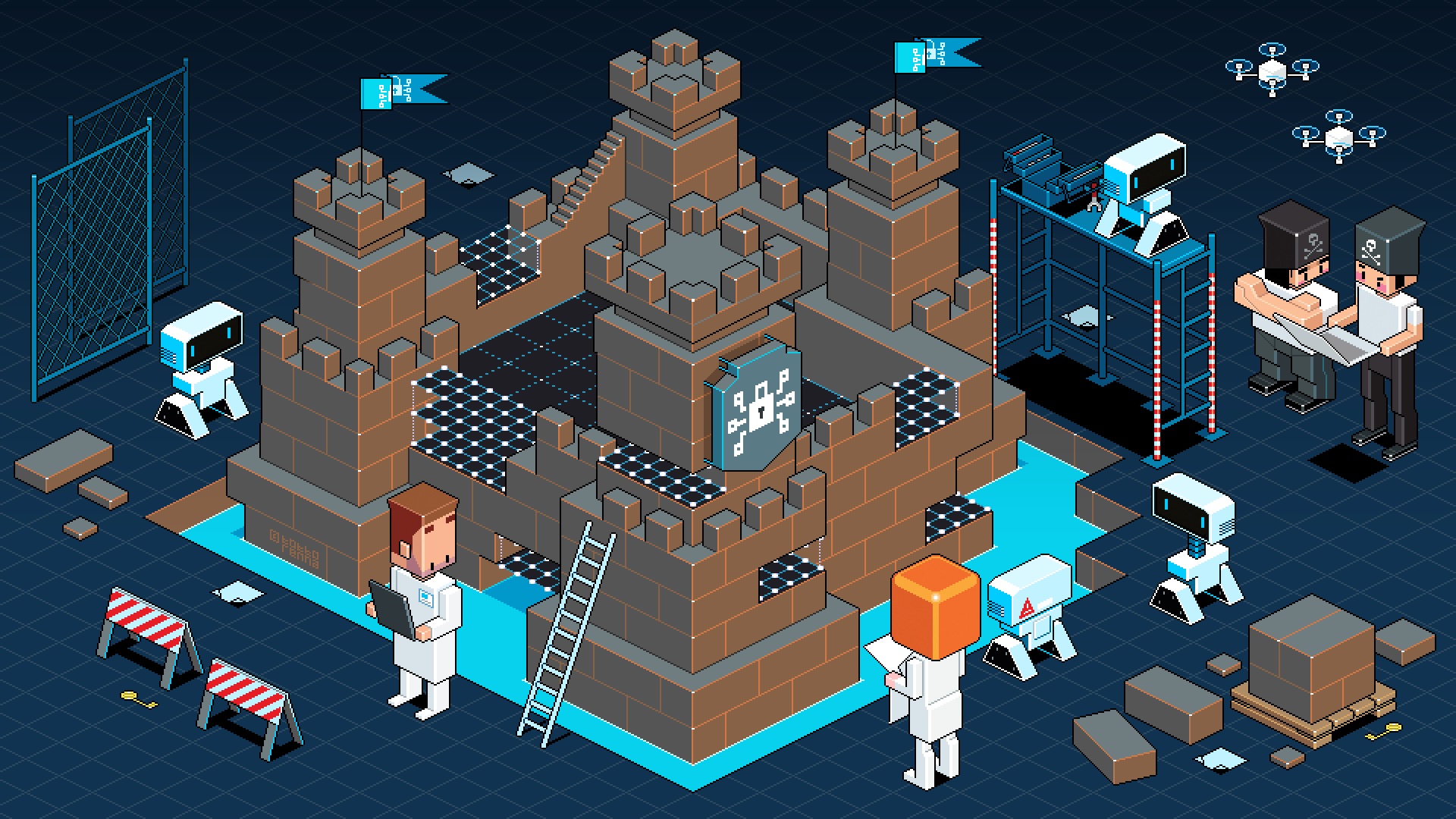Best telescopes for kids 2025: A stargazing introduction for budding astronomers
Our picks of the best telescopes for kids are easy to use, affordable, and a great way to introduce youngsters to the night sky ahead of Black Friday.

We've rounded up the best telescopes for kids, focusing on scopes that are easy to use, hard-wearing, suitable for small hands and eyes and, most importantly, inexpensive.
Not every one of the best telescopes on the market will be suitable for younger users. Some require complicated setups, while others are just too expensive to buy for what may simply be a passing interest. We've carefully chosen a selection of telescopes that children of all ages can enjoy. Most of these aren't toys: They're fully operational pieces of scientific equipment that just so happen to be suitable for kids.
Black Friday is a great opportunity to save some money on telescopes, too. We saw many of these models discounted for Prime Day, so there's a good chance there will be even more savings on November 28.
The quick list

Best overall telescope for kids
Lightweight, powerful and capable of giving fantastic views of the night sky, we think this is the best overall telescope for kids.
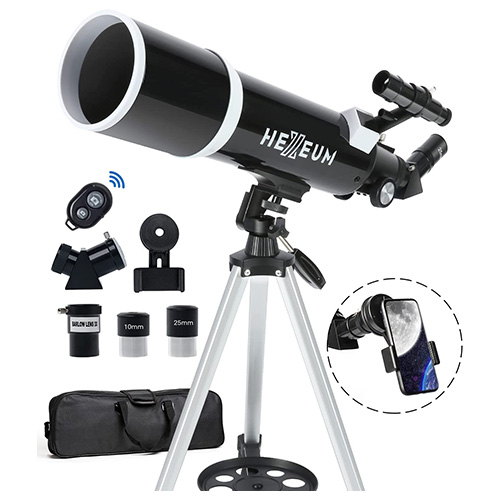
Best budget telescope for kids
The Hexeum might not have the most well-known brand name behind it, but this budget telescope performs very well, particularly for lunar views.
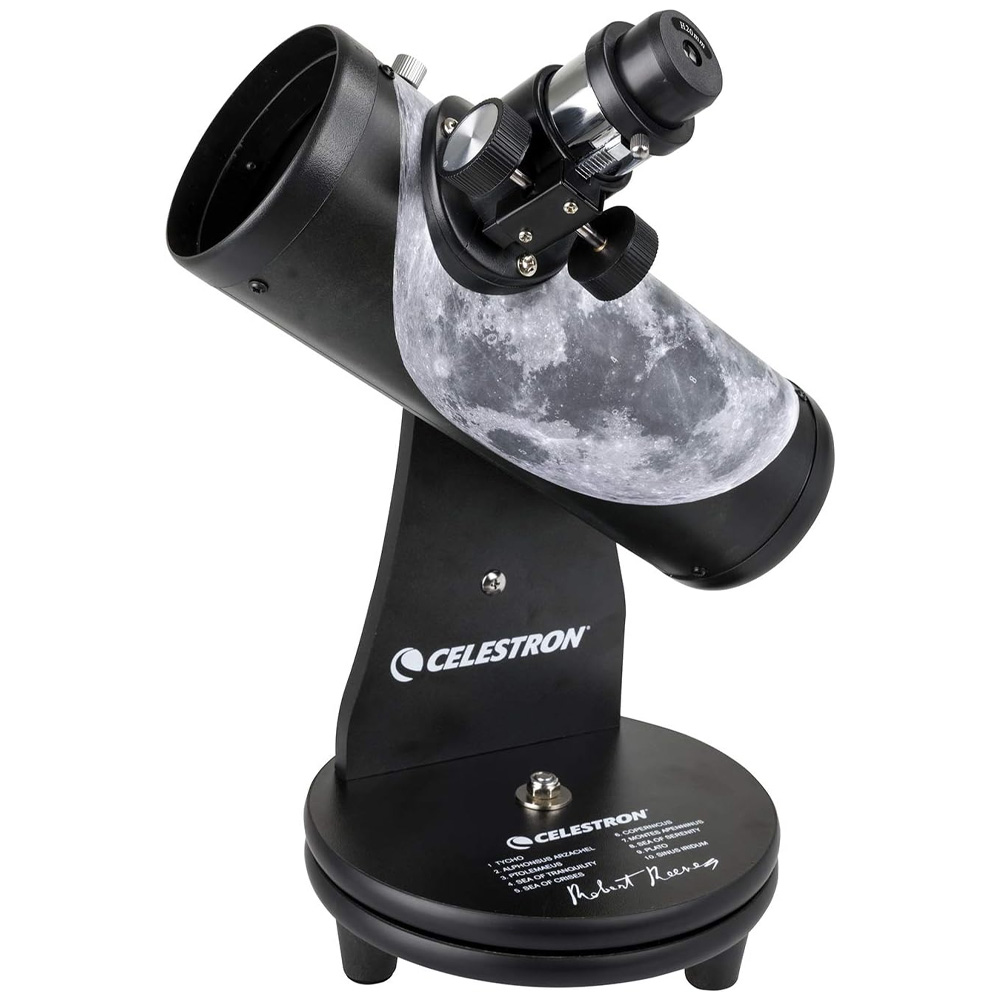
Best tabletop telescope for kids
The clue is in the name for this one: the Celestron FirstScope 76 is designed to be a first telescope. This tabletop design is easy to set up and convenient to use.
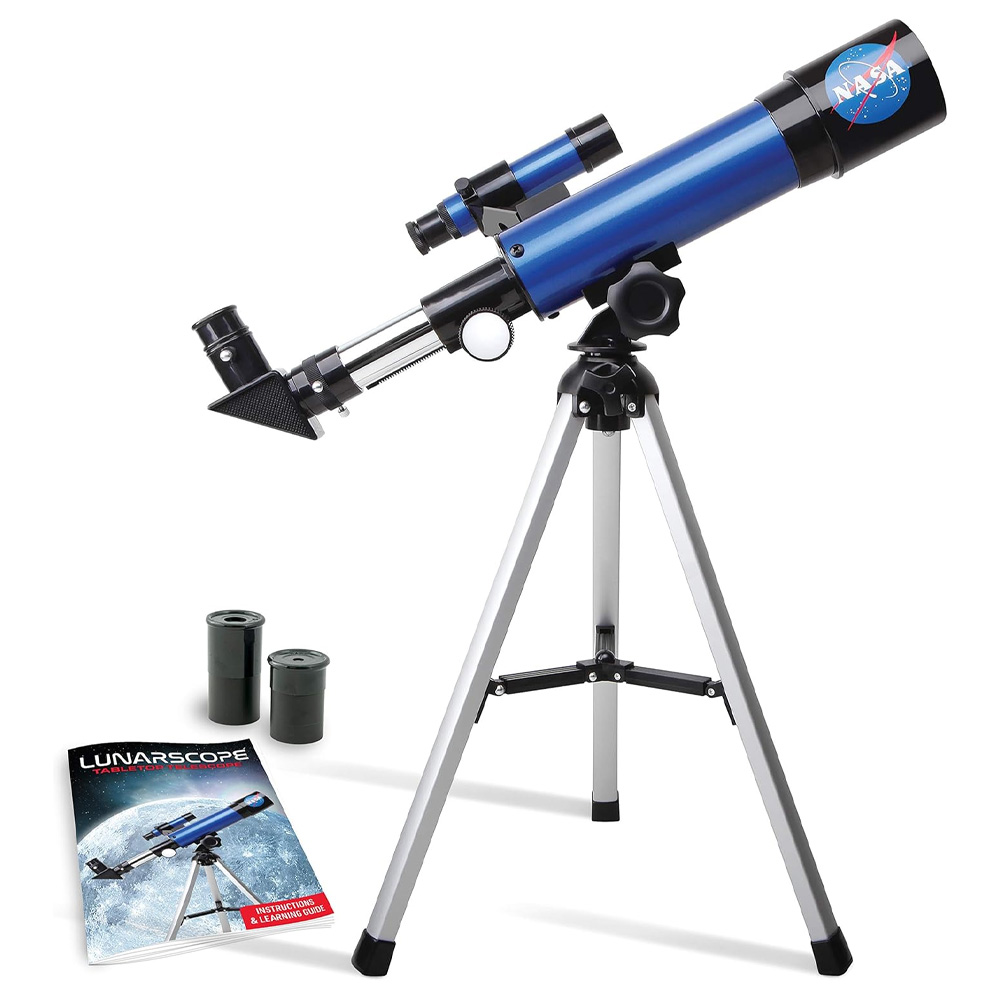
Best lunar telescope for kids
The NASA Lunar Telescope is an inexpensive way to get fantastic views of the moon's surface.
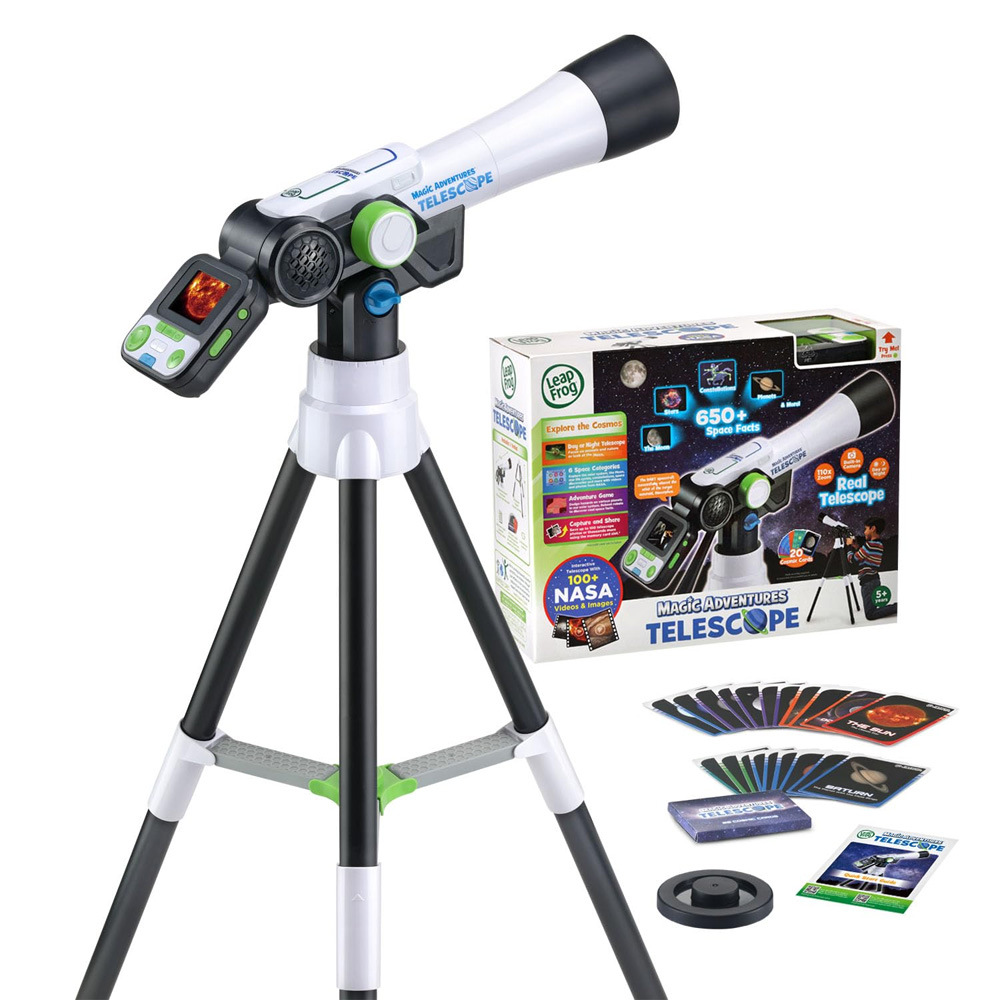
Best telescope for young kids
Leapfrog is known for its educational toys, and this working telescope is a fantastic way to introduce preschool-age kids to basic astronomy.
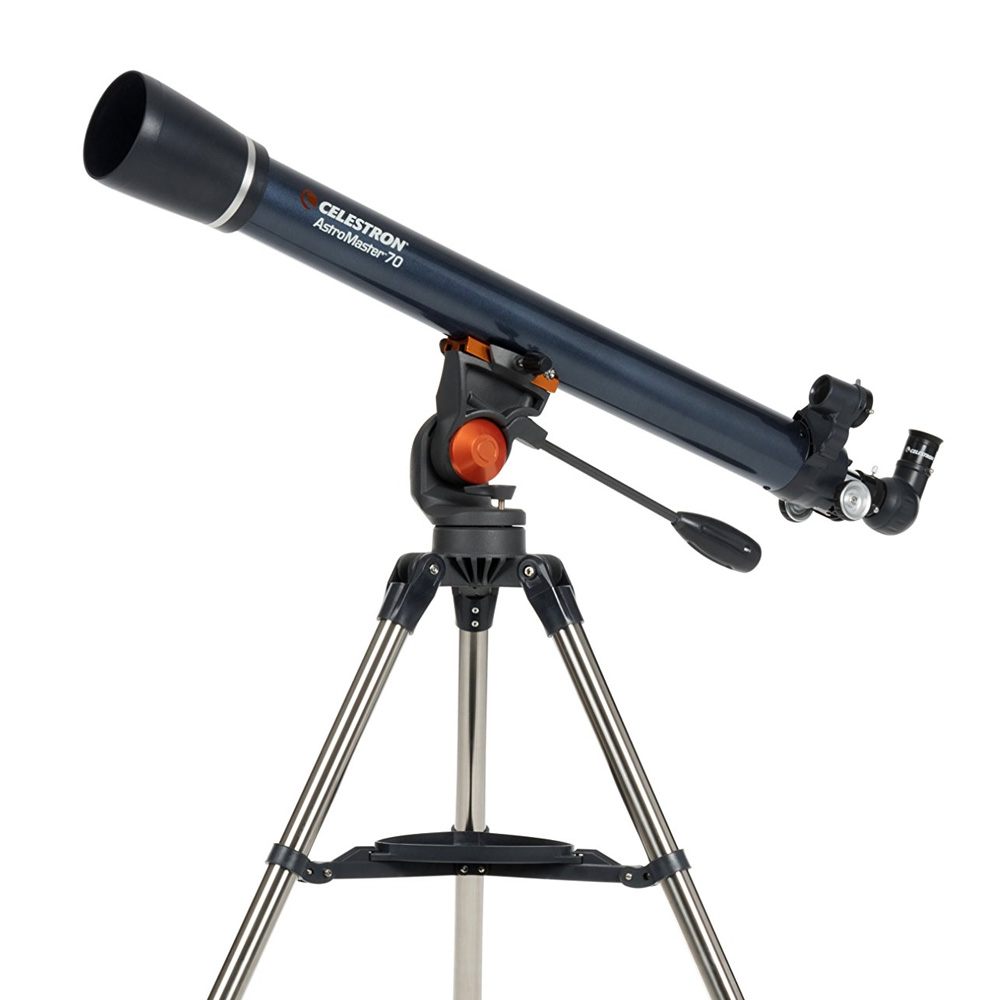
Best telescope for teens
Reasonably priced and easy to use, this is a great beginner's telescope suitable for teens wanting to try their hand at astronomy.
The best telescopes for kids in 2025
Why you can trust Live Science
Best overall telescope for kids
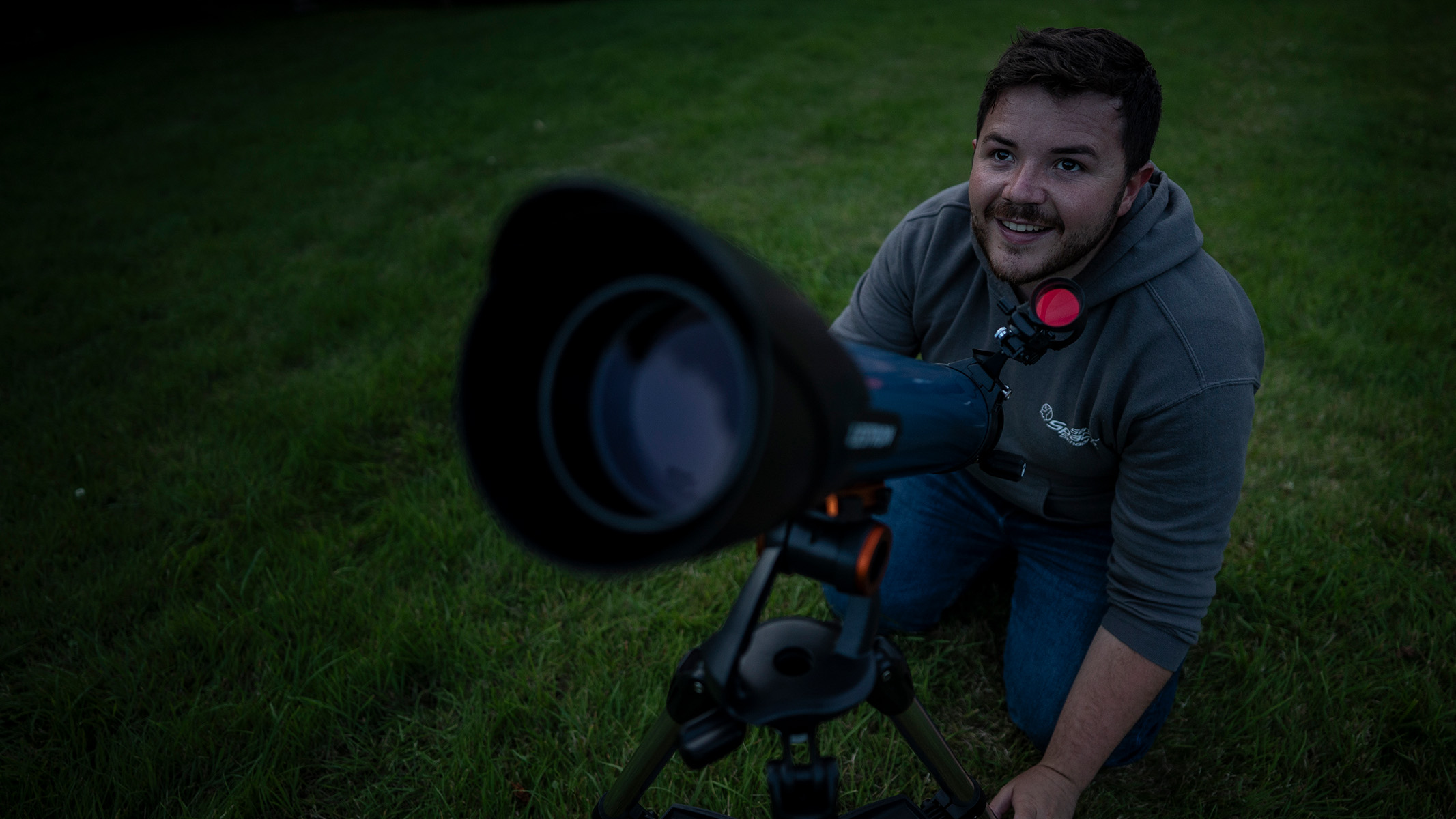
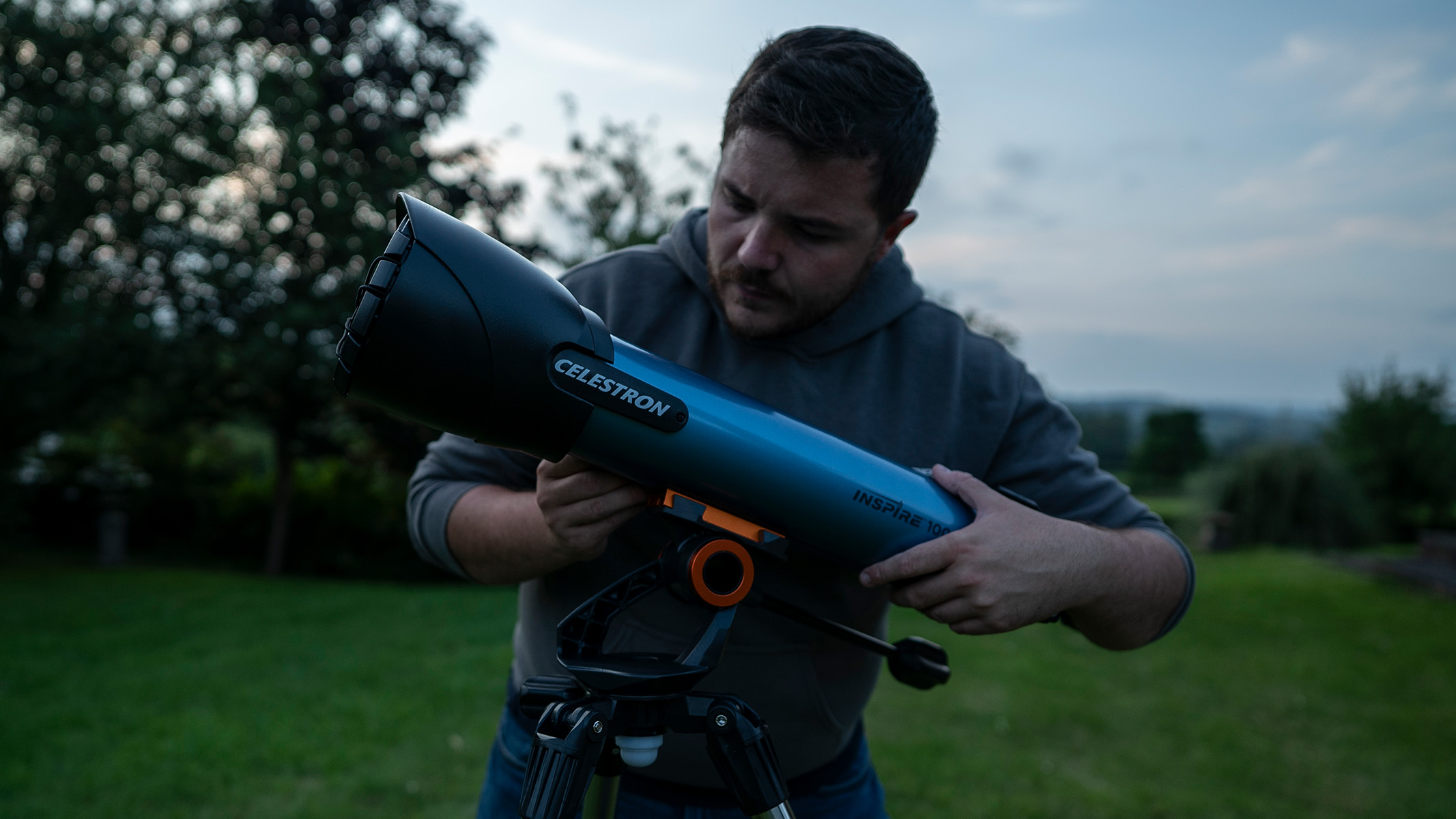
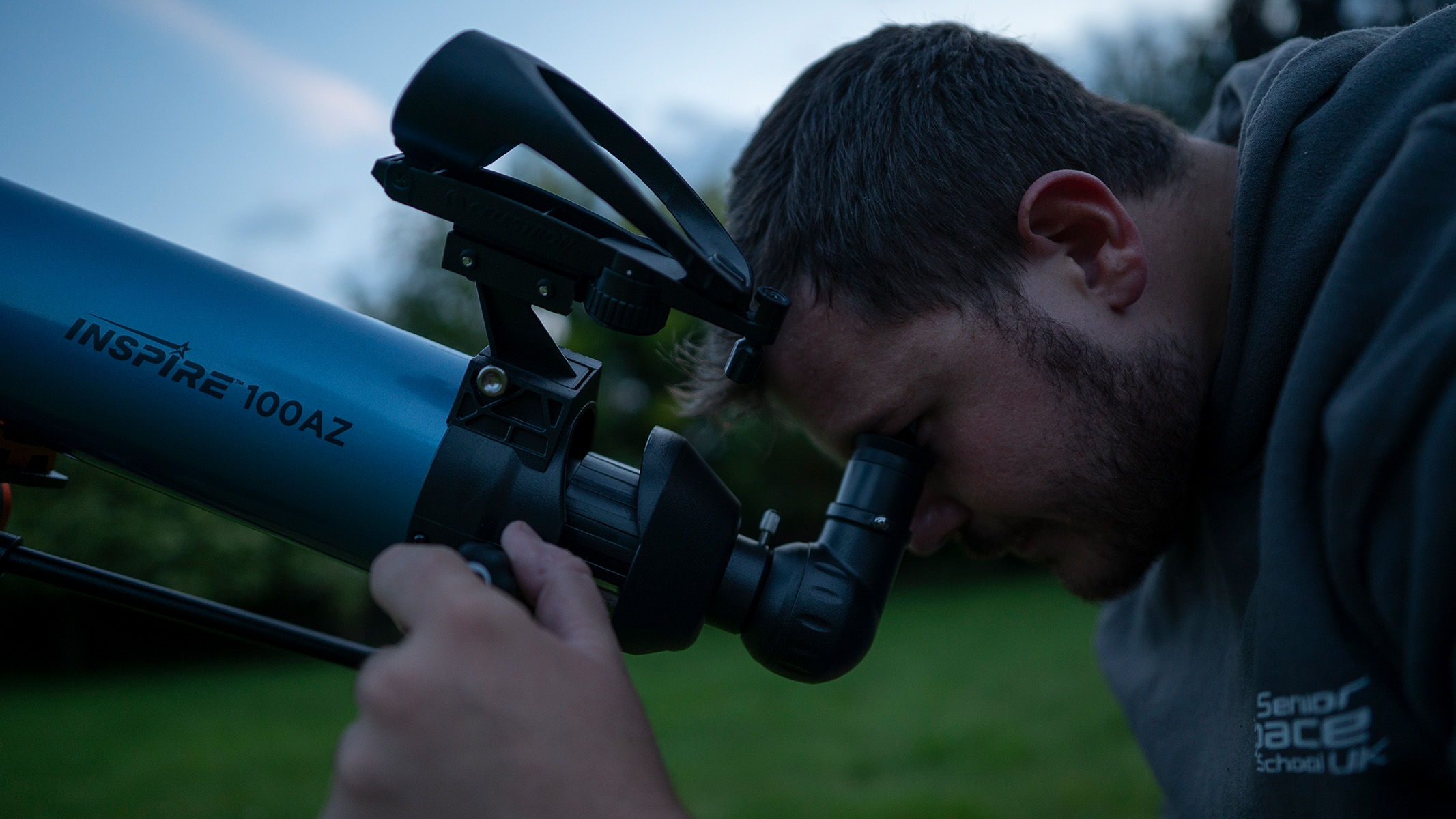
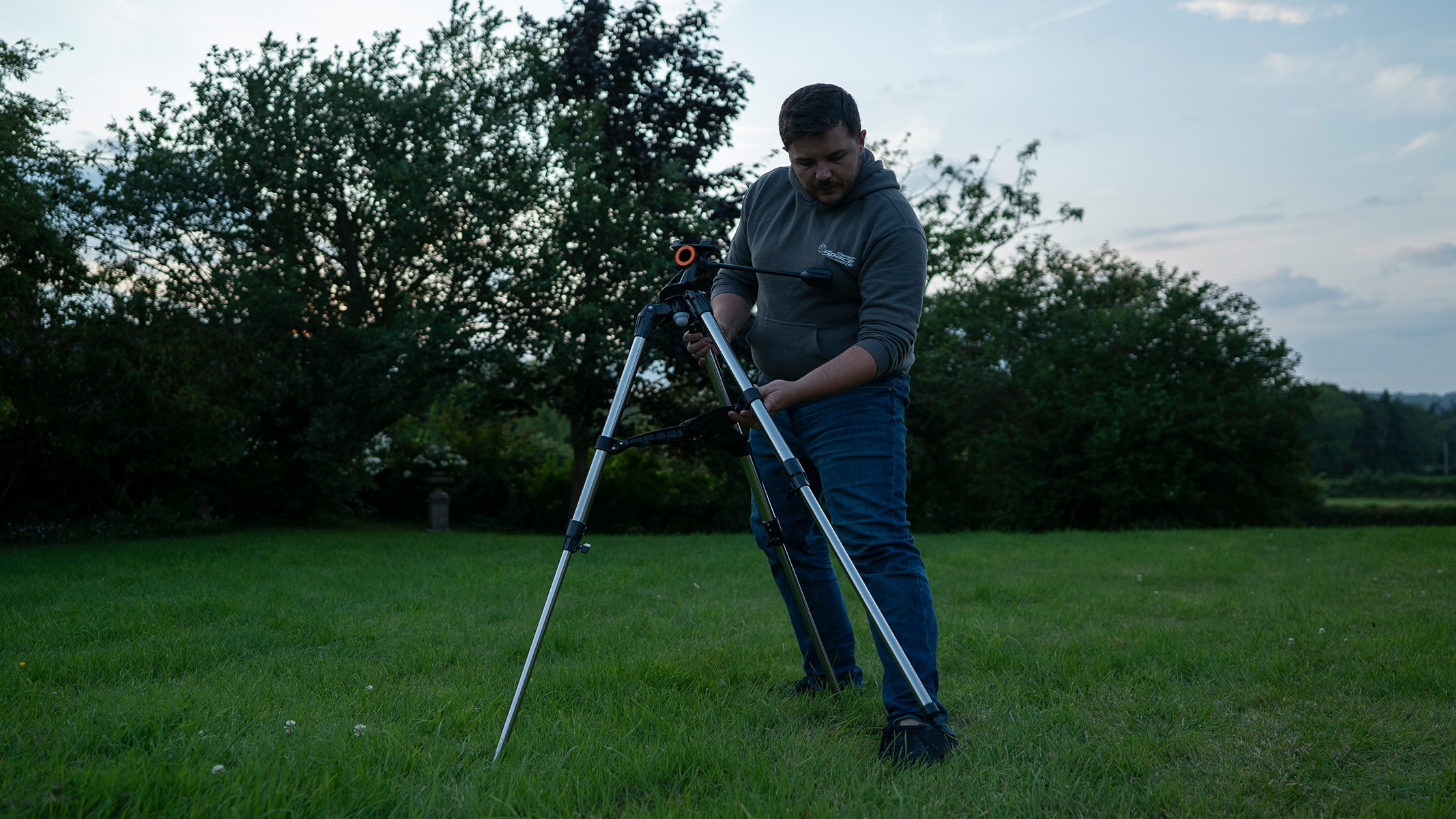
Specifications
Reasons to buy
Reasons to avoid
✅ You're buying for a kid with a passion for astronomy: This isn't the cheapest scope on the list, and shouldn't be purchased for a fleeting hobby.
✅ You're mainly setting up in your backyard: This isn't the heaviest telescope but it has a rather long tube, so it's not the best choice to travel with.
❌ You're buying for a younger child: There are telescopes better suited to young children. For preschool age, look at the Leapfrog Magic Adventures Telescope.
❌ Your kid is already experienced with a telescope: Take a look at the suggestions on our best telescopes list instead.
🔎 Celestron Inspire 100AZ: This telescope is more advanced than some other telescopes on this list, making it a great choice for kids who take astronomy seriously. It's a great beginner scope, offering fantastic views of the planets. ★★★★
While this is more advanced than some of the telescopes on this list, we still think it's an excellent choice for kids. This scope is perfect for children who take astronomy seriously and want a "grown-up" telescope rather than a toy. This wasn't designed with kids in mind, but it is a beginner telescope, making it easy to set up and use.
Weighing just 12.4 lbs (5.62 kg), it's light enough to move around if you need to, but we think it's best suited for use in the backyard: it has a rather long tube which is less than ideal for traveling with. But as long as you're away from too much light pollution, you'll be treated to some fantastic views with the Celestron Inspire 100AZ.
As we said in our Inspire 100AZ review, this telescope uses professional-grade optics, so it's capable of giving some absolutely fantastic views of the Moon and planets. Images are sharp and bright, although you won't be able to see details of deep-sky objects thanks to the limitations of the focal length and aperture. That's not surprising at this price point, and for most kids, being able to view the planets and Moon will be more than exciting enough.
There are some great features here too, like a lens cap that turns into a smartphone holder — ideal for kids who also want to try their hand at some basic astrophotography. It also comes with a year's free subscription to SLOOH Astronomer, a neat service that lets you control professional telescopes remotely and access livestreams.
Attribute | Notes |
|---|---|
Design | Lightweight, but not the most practical to move around. |
Performance | Fantastic views of the moon and planets. |
Functionality | Lens cap transforms into a smartphone holder. |
Best budget telescope for kids
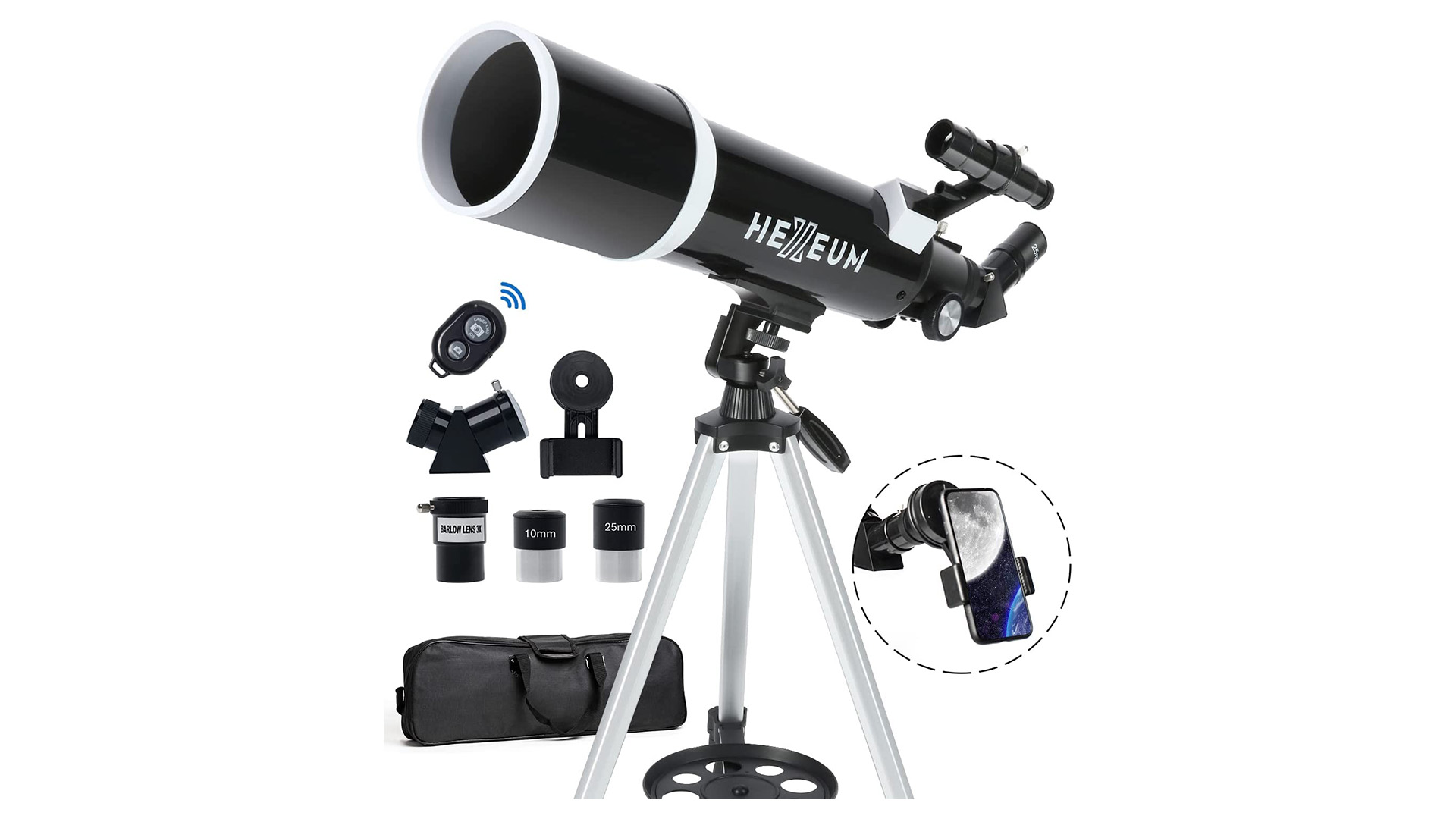
Hexeum AZ50070
Our expert review:
Specifications
Reasons to buy
Reasons to avoid
✅ You want something lightweight: This is a small and light telescope, easy for moving around with — it even comes with its own travel bag.
✅ You want to try your hand at astrophotography: The built-in phone mount makes trying out basic photography nice and easy.
❌ You want something very sturdy: Reviews suggest the mount is flimsy and the build quality isn't the sturdiest.
❌ You're not buying for an absolute beginner: There are better telescopes for experienced users — take a look at the Vaonis Hestia or the AstroMaster 70AZ.
🔎 Hexeum AZ50070: This telescope offers fantastic value and does a valiant job of offering views of the moon and planets. It isn't the sturdiest and you'll get better quality elsewhere, but for the price, it's hard to complain. ★★★★
There's a lot to love about the Hexeum AZ50070. One of the cheapest telescopes on the market, it contains absolutely everything you need to get started: There are two eyepieces, a 3x Barlow lens, a Finderscope, a smartphone mount for astrophotography and even a carry bag to put it all in when you're not using it. For a telescope that's frequently available for less than $70, that's incredible value.
Of course, there's an element of "you get what you pay for" here. Hexeum is a brand that you'll unlikely be familiar with, and the build quality of the AZ50070 is rather lacking. The tripod is wobbly and the materials used to construct the telescope feel cheap. But this is cheap — and where it matters, the Hexeum AZ50070 delivers.
It's very easy to set up, even for kids, making this a great first telescope. Thanks to the two eyepieces (10mm and 25mm) and the 3x Barlow lens, there's a good variety of magnification available, with the maximum being 150x. You'll be unlikely to get clear deep-sky views with this telescope, but for getting up close to the moon's craters and even Jupiter, this telescope does a great job.
We wouldn't necessarily recommend the Hexeum AZ50070 to older children who have used telescopes before, but for absolute beginners, this is a fantastic choice that is unlikely to disappoint.
Attribute | Notes |
|---|---|
Design | Lightweight and easy to set up, but flimsy. |
Performance | Ideal for views of the moon and planets. |
Functionality | Comes with everything you need straight out of the box. |
Best tabletop telescope for kids
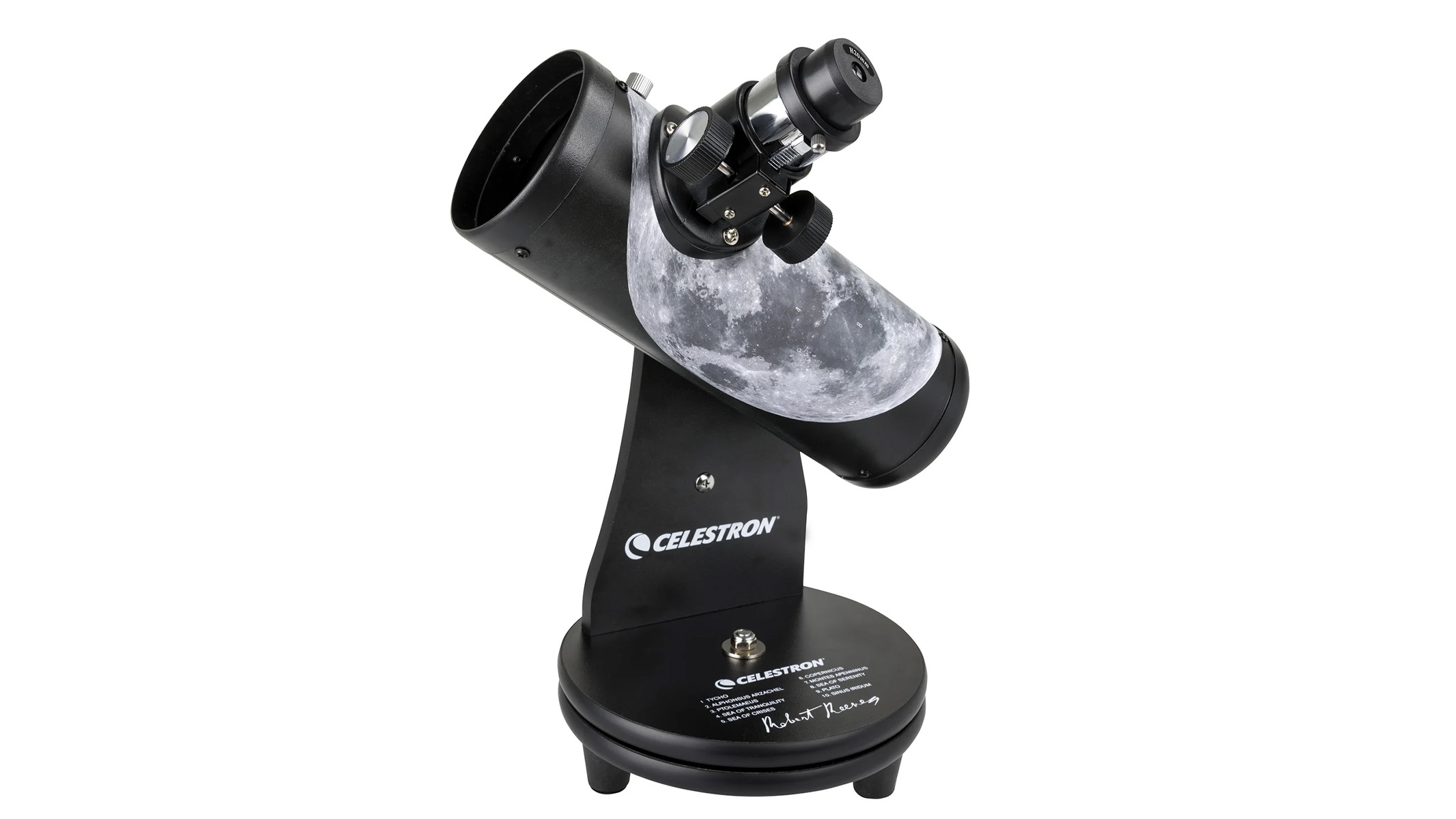
Celestron FirstScope 76mm
Our expert review:
Specifications
Reasons to buy
Reasons to avoid
✅ You want something quick to set up: The FirstScope 76 is pretty much ready to go straight out of the box.
✅ You don't want to spend a fortune: This is a very reasonably priced telescope that doesn't feel cheap.
❌ You want to find objects easily: Without a finderscope, finding particular objects can be frustrating.
❌ You want a tripod: As a tabletop telescope, you need to rest it on a table. Maybe consider the Celestron Inspire 100AZ instead.
🔎 Celestron FirstScope 76: Solid, easy to use and ready to go straight out of the box, this is a fantastic starter telescope for kids. Some views might not be so sharp, but for beginners, it's a great choice. ★★★★
As you'll probably guess from its name, the Celestron FirstScope 76 has been designed with first-time astronomers in mind. It's not necessarily been marketed as a children's telescope — adult newcomers are welcome too — but it is the ideal choice for kids.
This tabletop telescope requires no set-up: It's ready to use straight out of the box. It's easy to use too, and it's lightweight enough to move around should you need to transport it. But despite weighing less than 5 pounds (2 kg), it's still a robust telescope: We think it feels very sturdy, which is a big positive given the budget price of the FirstScope.
Of course, taking that price into consideration, you can't expect it to compete with more expensive telescopes, and there are a few downsides. It doesn't come with a finderscope, for example, so locating particular objects in the night sky can be frustrating without that extra navigation and alignment aid. Finderscopes can be bought separately, though, so it might be worth investing in one.
But the views you do get, when you find what you're looking for, are impressive enough. The Celestron FirstScope 76 is perfect for looking at the moon and the closer planets, and we're pretty sure kids will be in awe as they see the Moon's craters close up. Seeing things further away leads to blurry and faint images, unfortunately: Don't expect to get a good look at Saturn's rings, for example.
Attribute | Notes |
|---|---|
Design | Ready to use straight out of the box. |
Performance | Fantastic views of the moon, deep-sky views are blurry and faint. |
Functionality | Doesn't come with a finderscope. |
Best compact telescope for kids
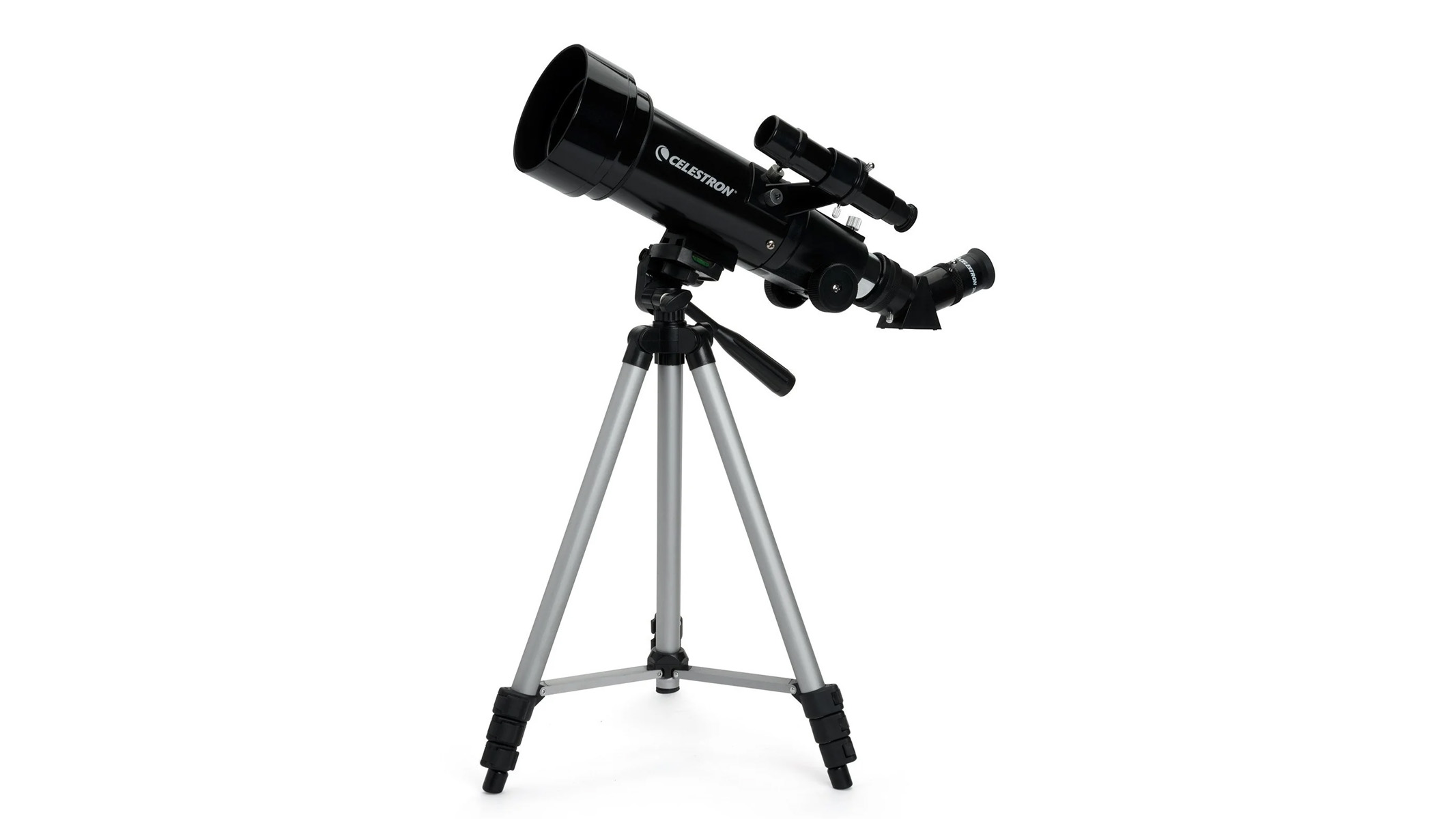
Celestron 70mm Travel Scope
Our expert review:
Specifications
Reasons to buy
Reasons to avoid
✅ You want a super-lightweight telescope: This has been designed with travel in mind, so it's one of the lightest telescopes on the market.
✅ You don't need bells and whistles: The Travel Scope is basic, but for beginners that can often be a benefit.
❌ You want something more sturdy: This is designed with travel in mind so it's a little flimsy. Consider the Celestron FirstScope 76 if you want something sturdier.
❌ You want smart functions: This is as barebones as they come. If you want a smart telescope, take a look at the Vaonis Hestia.
🔎 Celestron 70mm Travel Scope: If portability is important, this is the ultimate telescope. It's free of any bells and whistles, but it's easy to use, making it a great choice for beginners. ★★★★½
If you're wanting a telescope that you and your kids can easily pack up to take camping or on a hiking trip, the Celestron 70mm Travel Scope is well worth considering. It weighs just 3.3lbs (1.5kg), making it one of the lightest "proper" telescopes on the market. It even comes with a bespoke, high quality backpack, making it very easy to pack away and transport.
Coming from Celestron, one of the biggest names in the skywatching field, you know you're buying a quality item, and the Travel Scope comes with a two-year warranty along with unlimited support, giving you extra peace of mind.
This is one of Celestron's more basic telescopes, but that's what makes it ideal for beginners. There are no bells and whistles here; you won't find computerized functions or smartphone connectivity. This is just a simple manual telescope that offers great views of close objects, such as the Moon and planets.
It has fully-coated glass, which offers bright, clear views — so good, in fact, that some users have even managed to successfully view nebulas.
The only downside is that the Travel Scope is a little flimsy, partially due to how lightweight it is. The included tripod isn't the sturdiest, so if you want something that's going to stay put, you might be best looking elsewhere. But if portability is important, this telescope is a great choice.
Attribute | Notes |
|---|---|
Design | Incredibly lightweight. |
Performance | Offers clear, sharp views thanks to fully coated glass. |
Functionality | Tripod isn't very sturdy. |
Best lunar telescope for kids

NASA Lunar Telescope
Our expert review:
Specifications
Reasons to buy
Reasons to avoid
✅ You're buying for a young child: As the name suggests, you won't be able to view anything but the Moon here, but it's a good start for a youngster.
✅ You want something small and lightweight: It's a very small telescope that doesn't take up much space.
❌ You want something you can use yourself: This one is very much for kids only — its size alone makes it hard for adults to use comfortably.
❌ You want to see more than the moon: Maybe consider the Celestron Inspire 100AZ if you'd also like to see some planets.
🔎 NASA Lunar Telescope: A very small telescope suitable for young children, the NASA Lunarscope offers a great introduction to astronomy. Don't expect amazing quality views, but for a budget price it's a fun way to get kids interested in space. ★★★½
Costing less than $50, the NASA Lunar Telescope is a great way to introduce children to astronomy. This telescope is very small, and it's been designed with small users in mind. Its tripod is particularly short, so it's perfectly suited for kids aged 8 or under — older (or taller) children might struggle, which is something to bear in mind before you choose this one.
We like that it's built to suit small bodies and hands, though. There's something exciting, when you're a kid, about having something just for you, and that's the feeling we get with the NASA Lunar Telescope: It's a real, working telescope, but built with small children in mind.
Of course, given the fact that it is for kids — and it costs under $50 — you aren't going to get the best views out of it. It's more than adequate for viewing the moon, although you won't be able to see much further than that. It is called a lunar telescope after all! But with two included eyepieces you can achieve both 18x magnification and 90x magnification. The latter allows you to get a good look at the Moon's craters.
This is a lightweight telescope and, given its size, it's easy to transport. It doesn't have the best build quality but then again, for the price, it's hard to take issue with that. It comes with everything you need in the box, including a handy learning guide filled with various science facts and information about space that keen young astronomers will lap up.
Attribute | Notes |
|---|---|
Design | Lightweight and perfectly sized for small children. |
Performance | Designed for lunar views only |
Functionality | Limited use outside of viewing the moon, not the best quality. |
Best smart telescope for kids
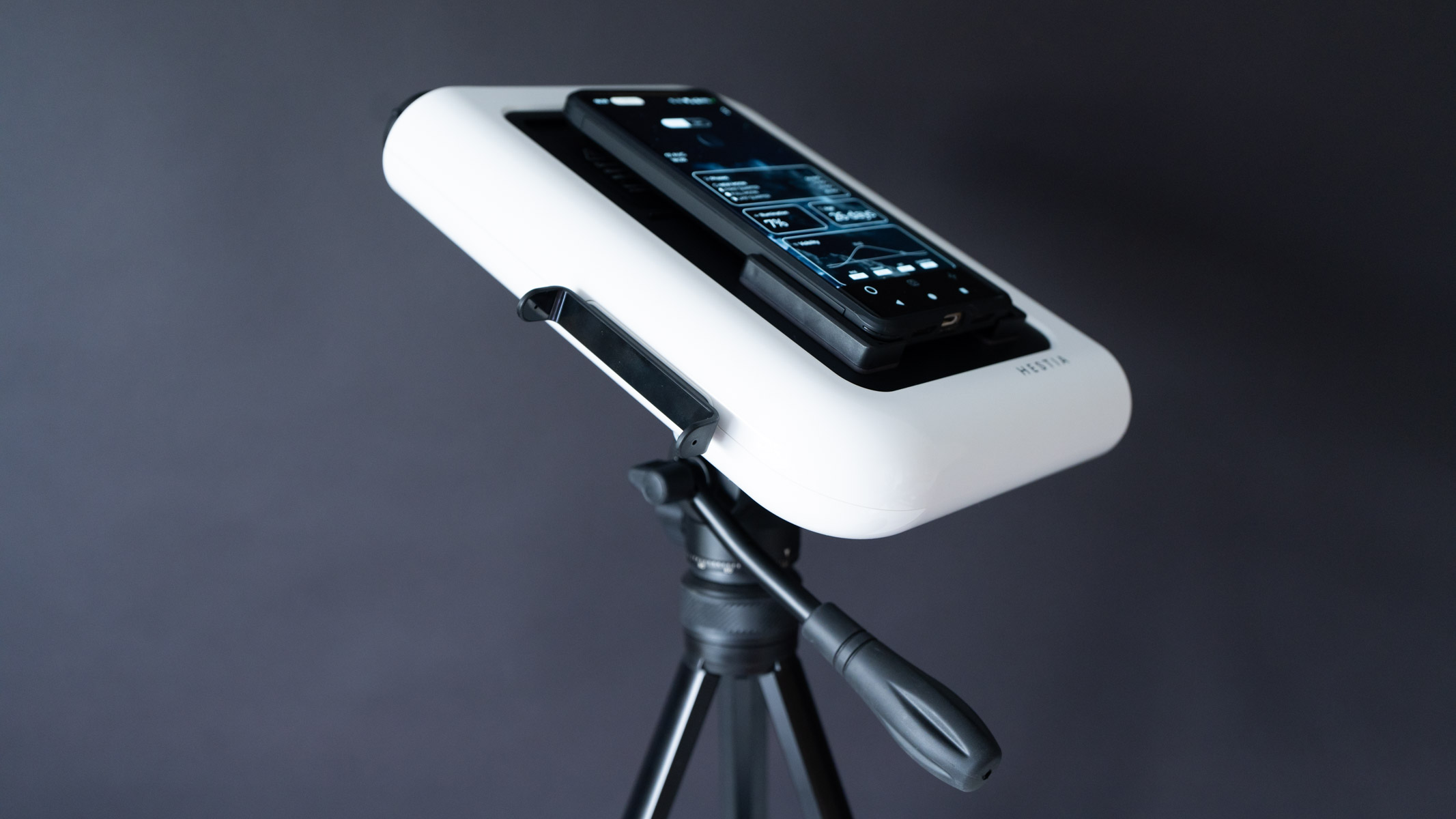
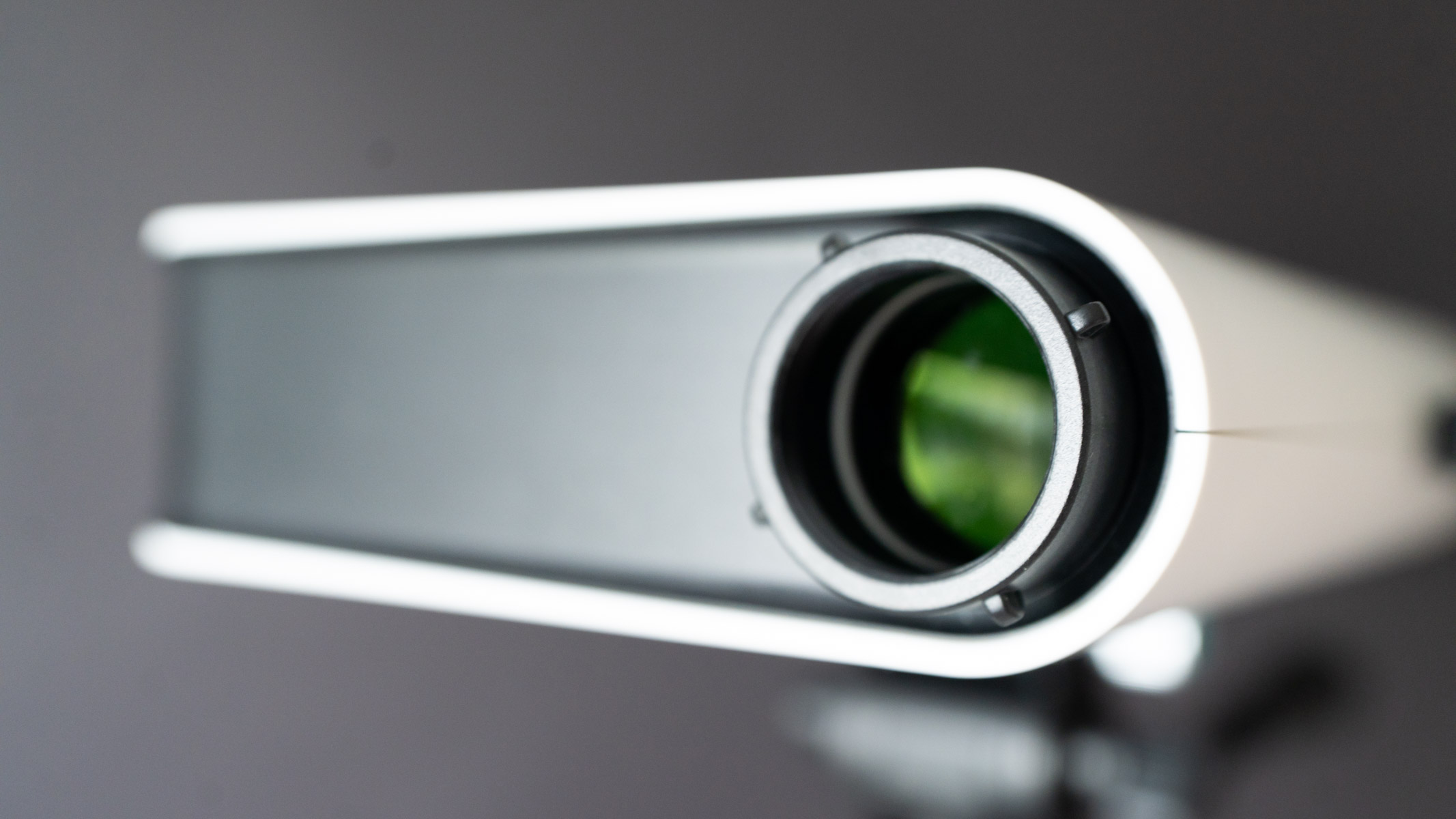
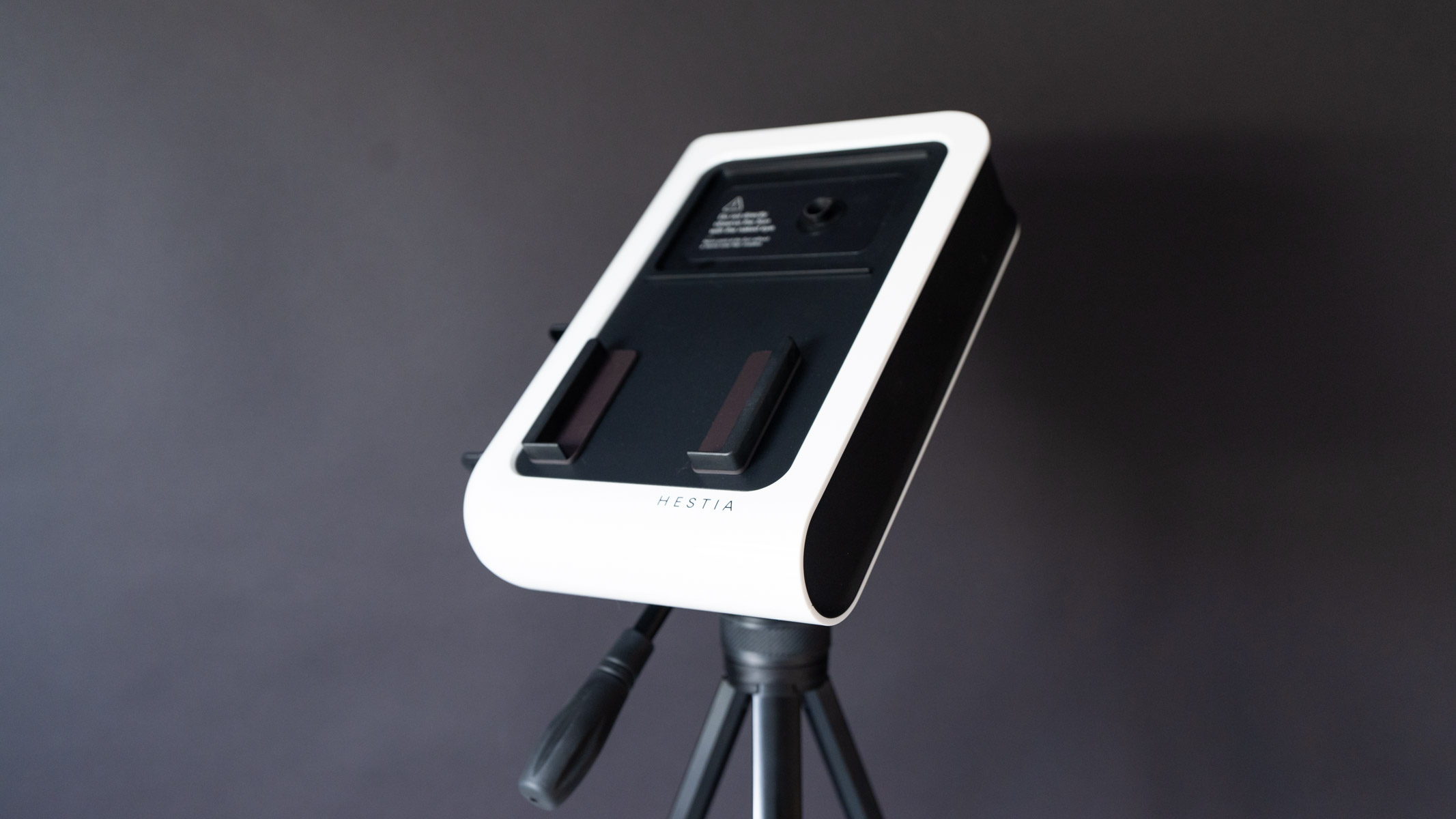
Vaonis Hestia
Our expert review:
Specifications
Reasons to buy
Reasons to avoid
✅ You like unique technology: This is unlike any other telescope on the market.
✅ You want something futureproof: The design of the Hestia means it will last a long time.
❌ You want a more traditional skywatching experience: You won't find it here. Take a look at the Celestron Inspire 100AZ instead.
❌ You don't want to have to use a smartphone: The Hestia requires a smartphone to operate and is useless without one.
🔎 Vaonis Hestia: The Hestia is unlike any other telescope on the market. It's a fascinating design, and makes looking at the stars easy — as long as you have a smartphone. It's perfect for sharing views with kids, since you don't need to look through an eyepiece. ★★★★½
The Vaonis Hestia really stands out as a feat of engineering. This is a smart telescope unlike anything else on the market, primarily because it's a smart telescope without any electronics within it. That's right: the Hestia itself is purely optical — everything else happens within your smartphone. By placing your phone on the ocular, you're then able to get closer to the night sky.
It's super-light; Vaonis says it's around the size of a book and it weighs less than a kilogram without a tripod. What's unusual is that you can buy it either as part of a bundle with an included tripod, or by itself — a good choice if you already have a tripod, or want to use it on a tabletop. It's perfect for taking camping or hiking since it doesn't require any power: As long as your smartphone has got charge, you're good to go.
Since you don't look through an eyepiece, the Vaonis Hestia is a great tool to share with the entire family, as you can view the night sky together, displayed on your smartphone screen. And because you aren't looking at the sun directly, it's ideal for solar views too, making it a good option to view solar eclipses while keeping your eyes safe.
Because the Hestia has no electronics on board, it's futureproof. As long as smartphones have cameras built into them, you'll be able to use the Hestia, meaning it's a piece of technology that kids should be able to use throughout their childhood.
Attribute | Notes |
|---|---|
Design | Sleek, modern design. Weighs less than 1 kg. |
Performance | Non-traditional views of the sky, good option for solar viewing. |
Functionality | Requires a smartphone to use. |
Best telescope for young children
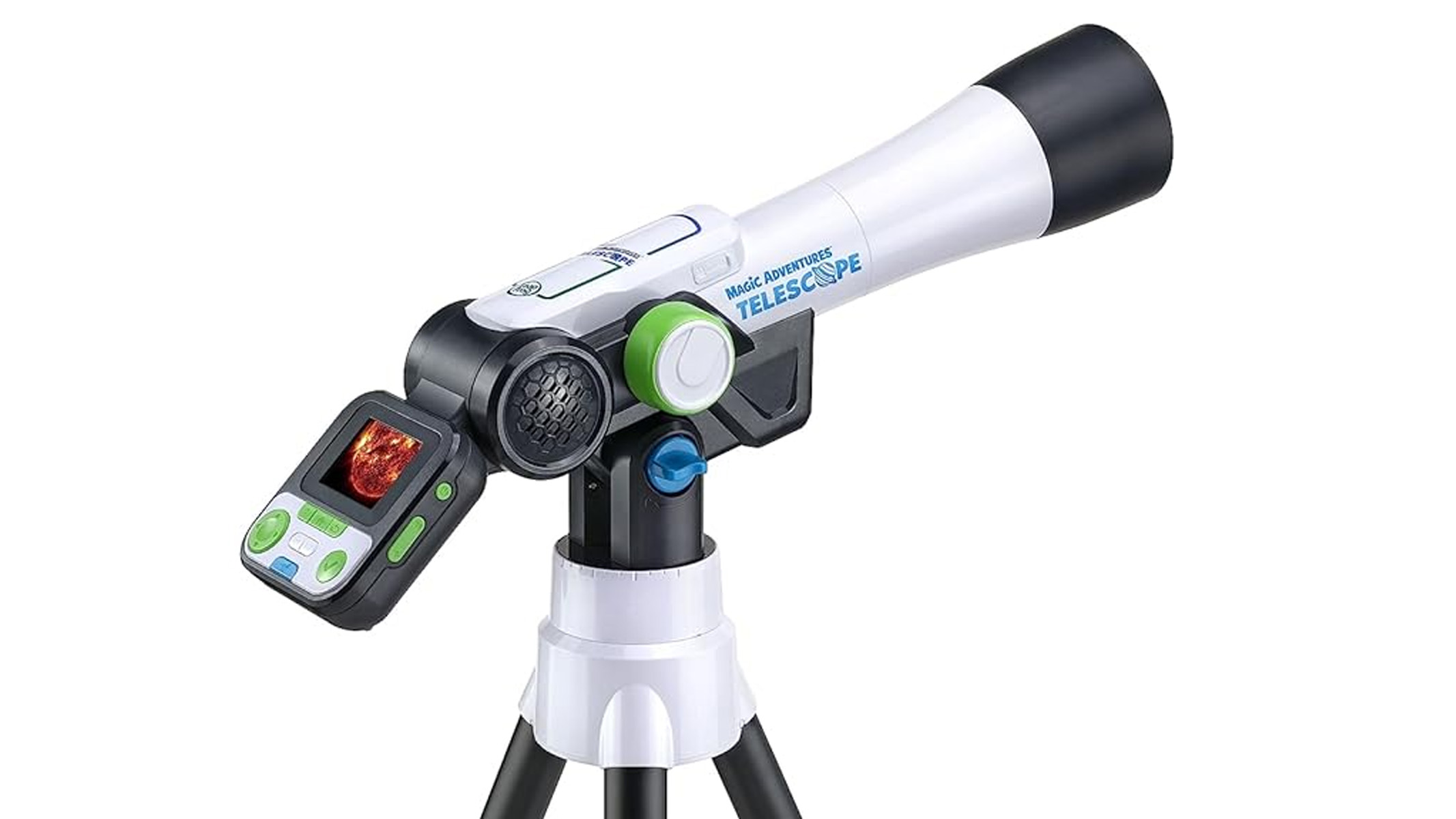
LeapFrog Magic Adventures Telescope
Our expert review:
Specifications
Reasons to buy
Reasons to avoid
✅ You're buying for young children: This is the perfect introduction to astronomy for 3-7 year olds.
✅ You want a telescope with a screen: The built-in digital screen means you don't need to look through an eyepiece, making it ideal for helping your kids find subjects in the night sky.
❌ You're buying for older kids: This is very much a telescope designed for young children. For older kids, take a look at the Vaonis Hestia.
❌ You want a traditional telescope: This is a digital telescope with a screen, rather than an eyepiece. Consider the NASA Lunar Telescope for a traditional experience for kids.
🔎 LeapFrog Magic Adventures Telescope: A toy that's also a working telescope, this is a great way to introduce youngsters to the night sky. A built-in camera allows them to try their hand at astrophotography, too. ★★★★
LeapFrog is a brand known for making educational toys for preschool-aged children. The company has been around a long time, and has a good reputation for creating good quality STEM-themed toys. The Magic Adventures Telescope is a toy, but it's also a working digital telescope, providing young children with their first access to the night sky.
Rather than requiring kids to look through an eyepiece, the LeapFrog Magic Adventures Telescope has a built-in digital screen. The precise optics of the telescope are unknown, but with a 50mm objective lens diameter it lets in enough light to capture decent views of the moon and nearby objects.
What's particularly neat is that the telescope has a built-in camera, allowing kids to capture images of whatever appears on their screen. An SD card slot allows these images to be saved easily, then moved to a computer for printing or editing.
You'll need four AA batteries to power the telescope, so that's something to bear in mind when purchasing it. But it's very easy to use, and most kids should be able to operate it by themselves with minimal supervision. There are even built-in games, educational images and videos from NASA that can be accessed via the telescope's screen.
The Magic Adventures Telescope comes on a tripod, but this can be removed so you can use it in tabletop mode if preferred. It's lightweight thanks to its plastic design, so we'd recommend taking care as it's not the most robust telescope on the market.
Attribute | Notes |
|---|---|
Design | Chunky and plasticky. Designed with young children in mind. |
Performance | Digital screen, offers decent views of close objects. |
Functionality | Has a built-in digital camera. |
Best telescope for teens
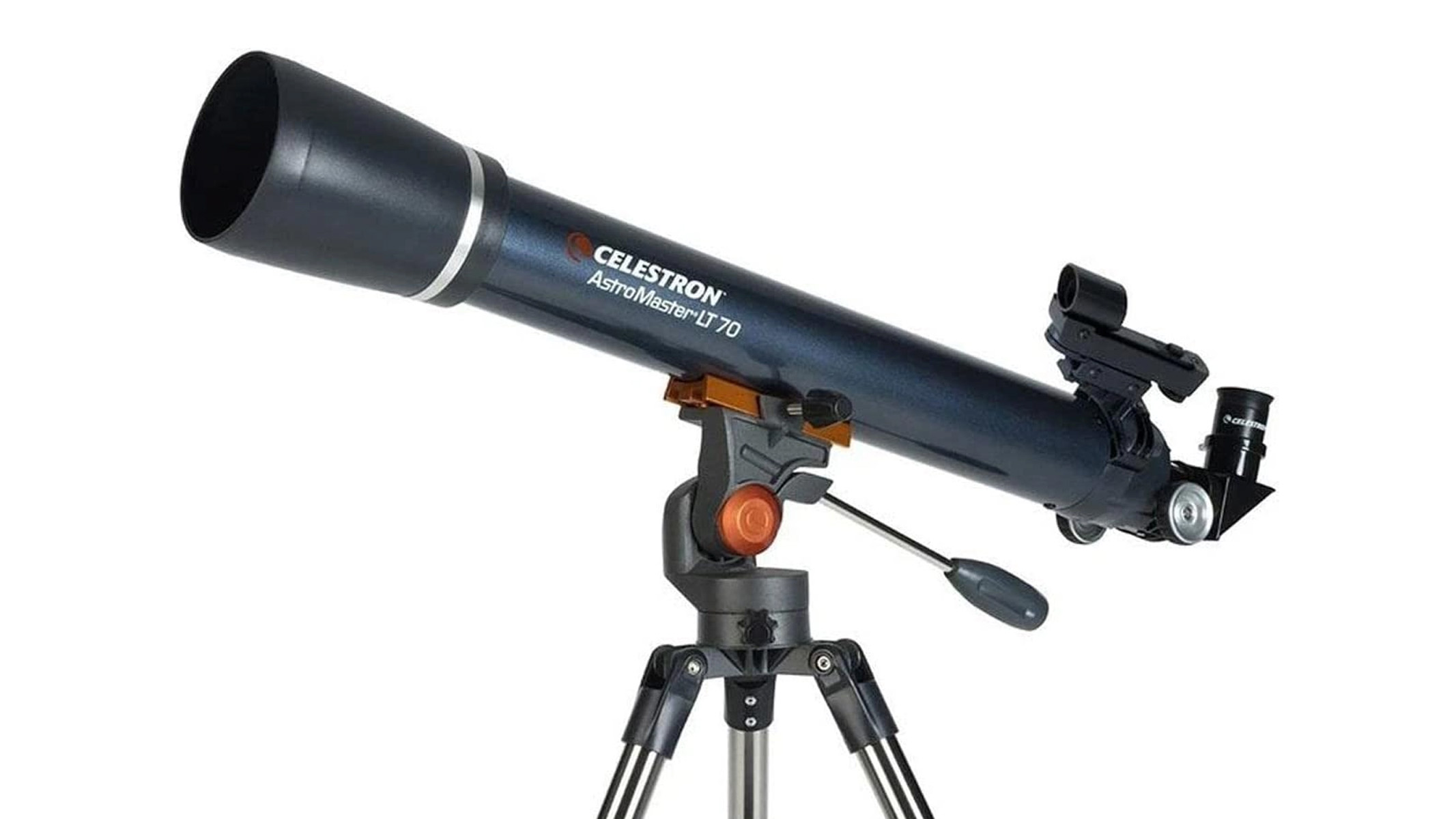
Celestron AstroMaster 70AZ
Our expert review:
Specifications
Reasons to buy
Reasons to avoid
✅ You want something budget-friendly: This is a good choice if you're looking for a "grown-up" telescope that won't break the bank.
✅ You want to focus on viewing near objects: For the Moon and planets, this offers great views, although deep-sky objects are dim.
❌ You want precise control: Controlling the telescope via the pan handle is tricky as it lacks precision.
❌ You want smart functions: This is a traditional telescope. Consider the Vaonis Hestia if you want a smart telescope.
🔎 Celestron AstroMaster 70AZ: This a solid first "grown up" telescope, with a long tube that offers beautiful views of the moon and planets. Its focal ratio is a little too small to get bright deep-sky views, however. ★★★½
The Celestron AstroMaster 70AZ is a good choice of telescope for a teenager or older child who wants a "grown-up" telescope. Budget-friendly and easy to set up, this offers wonderful views of the moon and planets, but while you can gaze further afield with it, its deep-sky views tend to be a little dull thanks to its low focal ratio.
But when you're gazing closer to home, you'll find bright, naturally colored views, which are a joy to experience. Many other beginner refractor telescopes fall victim to chromatic aberration, but thanks to the long length of the AstroMaster 70AZ's tube, the colors of the planets and the moon are kept beautifully natural. You'll be able to enjoy gorgeous views of Saturn and even Jupiter's moons using this.
The telescope also comes with a pan handle, which is unusual for this price point. It even comes with a clutch, which allows you to secure it into position when you've found your subject. Unfortunately, it's not that precise to use, which can lead to frustration when panning across the sky. It takes patience and a steady hand, which some users might find difficult.
Despite its issues, though, we still think this telescope is a great option for teens and older kids, particularly since it comes with everything you'll need straight out of the box. There are two eyepieces (10mm and 20mm), an erect image star diagonal, a starpointer finderscope and a free download of the Starry Night Basic software package.
Attribute | Notes |
|---|---|
Design | Sturdy, long tube, comes with pan handle |
Performance | Great, natural colors when viewing close objects, dull deep sky views. |
Functionality | Pan handle lacks precision. |
Best telescopes for kids: Comparison
| Header Cell - Column 0 | Optical design | Aperture | Focal length | Focal ratio | Eyepiece/s | Total weight | Mount type |
|---|---|---|---|---|---|---|---|
Celestron Inspire 100AZ | Refractor | 100mm | 660mm | f/6.6 | 10mm, 25mm | 12.4 lbs (5.6 kg) | Alt-azimuth |
Hexeum AZ50070 | Refractor | 70mm | 500mm | f/7.1 | 10mm, 25mm | 4.9 lbs (2.2 kg) | Alt-azimuth |
Celestron FirstScope 76mm | Reflector | 76mm | 300mm | f/3.95 | 4mm, 20mm | 4.3 lbs (1.9 kg) | Dobsonian |
Celestron 70mm Travel Scope | Refractor | 70mm | 400mm | f/5.7 | 10mm, 20mm | 3.3 lbs (1.5 kg) | Alt-azimuth |
NASA Lunar Telescope | Refractor | 50mm | 360mm | f/7 | 4mm, 20mm | 2.27 lbs (1 kg) | Alt-azimuth |
Vaonis Hestia | N/A | 30mm | N/A | N/A | N/A | 1.87 lbs (0.85 kg_ | Alt-azimuth |
LeapFrog Magic Adventures Telescope | Digital | 50mm | N/A | N/A | N/A | 3.75 lbs (1.7 kg) | Row 6 - Cell 7 |
Celestron AstroMaster 70AZ | Achromatic refractor | 70mm | 900mm | f/13 | 10mm, 20mm | 7.6 lbs (3.4 kg) | Alt-azimuth |
Contributing experts & product testers

Elizabeth Fraley is a pioneer in the field of early childhood education. She has over a decade of experience in early learning.
Kinder Ready and Elizabeth Fraley provide early learners with a robust science curriculum, inquiry-based learning, STEM, and interactive experiments focused on astronomy and earth sciences. She has specialized training in Love and Logic - a social and emotional curriculum, and was recently awarded an Educator of the Year Award from the county of Los Angeles for her service to the Los Angeles community.
Elizabeth’s work has been featured in many publications, including The LA Times, The Hollywood Reporter, CBS, SF GATE, among others. Elizabeth has been featured on Hallmark Home and Family with CNN Journalist, Lisa Ling and has also been featured in Popular Mechanics’ The Big Little Book of Awesome Stuff by Dan Bova.
Elizabeth has contributed to our FAQs.

Josh Dury Photo-Media AKA 'Starman' is an Award-Winning Landscape Astrophotographer, presenter, speaker and writer from the United Kingdom. His images have been recognized by NASA, APOLLO 11, ESA, TWAN, BBC & CBS amongst others, and he has partnered with Sigma, Benro and NiSi.
Josh has reviewed the Celestron Inspire 100AZ in this guide.
Best telescopes for kids: Frequently Asked Questions
What is the best telescope for kids?
We think the Celestron Inspire 100AZ is the best telescope for kids. It's a fully-functional telescope, but its budget price and ease of use makes it great for kids and beginners to learn astronomy with. It's lightweight, and offers fantastic views that are sure to encourage anyone with a passing interest in the night sky.
Are telescopes good for kids?
Elizabeth Fraley, M.Ed., told us, "Children can use a telescope to explore the night sky, enhancing their ability to retain astronomy-related facts and supporting a passion for science, STEM-related content. Families and children can explore the relationship between the distance light has traveled from the object to their eyes. Telescopes help create a sensory environment by stimulating the eyes and by physically holding and maintaining the telescope in view. Children can explore the moon and the planets, creating curiosity and the hope for lifelong learning.
Space exploration and the use of a telescope require the element of time. This activity requires more wait time, thus enhancing the child's ability to see tasks to completion, develop patience, and harness the ability to focus and engage in their explorations of space. Using a telescope helps children develop problem-solving skills and a learning of the cardinal directions. Children also begin to develop a sense of time and when to spot various stars related to the specific time of year.
Over time, children may begin to identify and name planets and remember specific characteristics about the uniqueness of each planet. After making several careful observations, children can draw, write and interpret their observations and findings in a journal, enhancing their literacy skills. Through exploring with a telescope, many children also harness and develop strong language and comprehension skills. By introducing this telescope early, children can decide if space, astronomy, or related areas are something they may pursue later in their later academic endeavors."
How much should I spend on a telescope for kids?
This absolutely depends on your own finances and how much you're willing to spend. For the youngest children, plenty of telescopes are available for less than $100. But for older kids, or children who are already serious about astronomy, you might want to look at spending more: You can easily find a good quality telescope between $200-$300, sometimes less. Be mindful of spending too much on a hobby that your children might quickly tire of, however.
What should I look for in choosing a telescope for kids?
When you're choosing a telescope for kids, the most important thing to consider is ease of use. Is it easy to set up? Is it easy to focus and to find a target in the night sky? You'll also want to consider its size: Some telescopes are made especially for small children, with low tripods and small bodies. Young children may struggle to use an adult-size telescope.
Price is also an important factor: Consider your own budget and how much you want to spend. Is it a hobby that your children are likely to stick with, or will it be a passing interest?
Are smart telescopes good for kids?
Smart telescopes are great for kids, although we'd recommend them for older children or teens. While smart telescopes themselves are very easy to use, they do require smartphone connectivity, so adult supervision may be required in getting them set up. They tend to be expensive, however, so their price point may be prohibitive for most young users.
What is the best age for a child to get a telescope?
This completely depends on your child. There are telescopes designed for young children, like LeapFrog's Magic Adventure Telescope which makes viewing the night sky accessible for kids as young as 3. The NASA Lunar Telescope is also made with children in mind, and we'd recommend that for kids between the ages of 6 and 9.
As long as adult supervision is available, there's also no reason kids as young as 5 with an interest in space couldn't use an adult telescope.
Can you see planets with a kid's telescope?
That depends on the specific model of a telescope. Some telescopes are merely toys and won't be equipped with optics good enough to see planets, so be sure to check the product description before buying.
Other telescopes, like the NASA Lunar Telescope, are designed only to see the moon, so views of the planets will be dim at best. Most telescopes we've featured on our list, however, will offer good views of the planets.
What is the best telescope for preschool-age children?
We think the LeapFrog Magic Adventures Telescope is ideal for preschoolers. This toy is a working telescope, albeit one that's equipped with a digital screen rather than an eyepiece. This makes it much easier to use than a traditional telescope.
What is the best telescope for a teenager?
We think the Celestron AstroMaster 70AZ is the best telescope for teens. This budget-priced telescope offers fantastic views of the planets and nearby objects, with great color and clarity. It's easy to use and is a good place to grow a love of astronomy before moving on to a more powerful, more expensive telescope.
What is the cheapest telescope for kids?
We've chosen the Hexeum AZ50070 as one of the best budget telescopes for kids. It works surprisingly well and it's available for around $90. The NASA Lunar Telescope is also very budget-friendly, costing less than $50, but it is limited in what it's capable of.
Latest updates
June 30, 2025: Added stargazing events into the intro, and Elizabeth Fraley, M.Ed., contributed to our FAQs.
How we test the best telescopes for kids
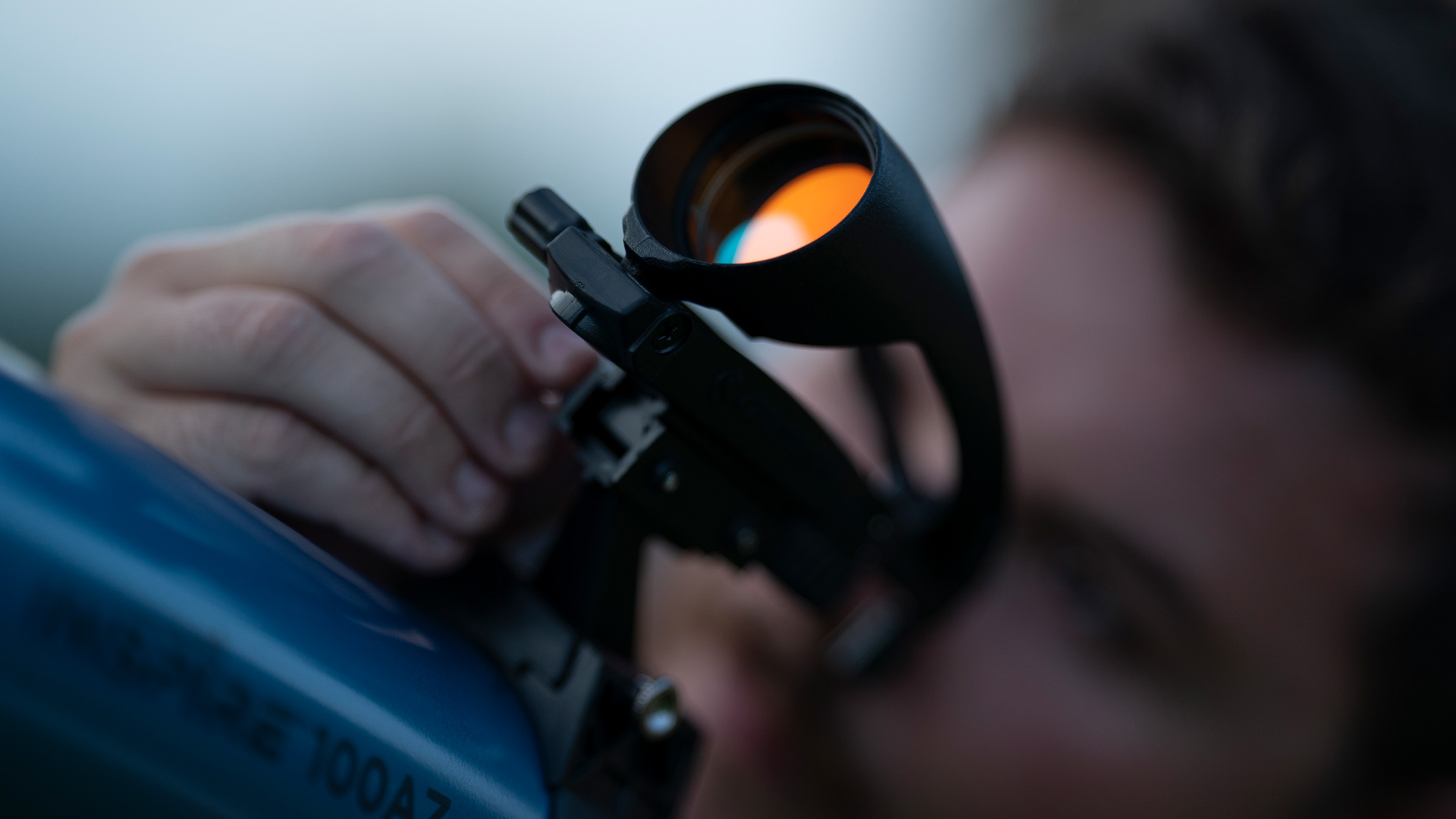

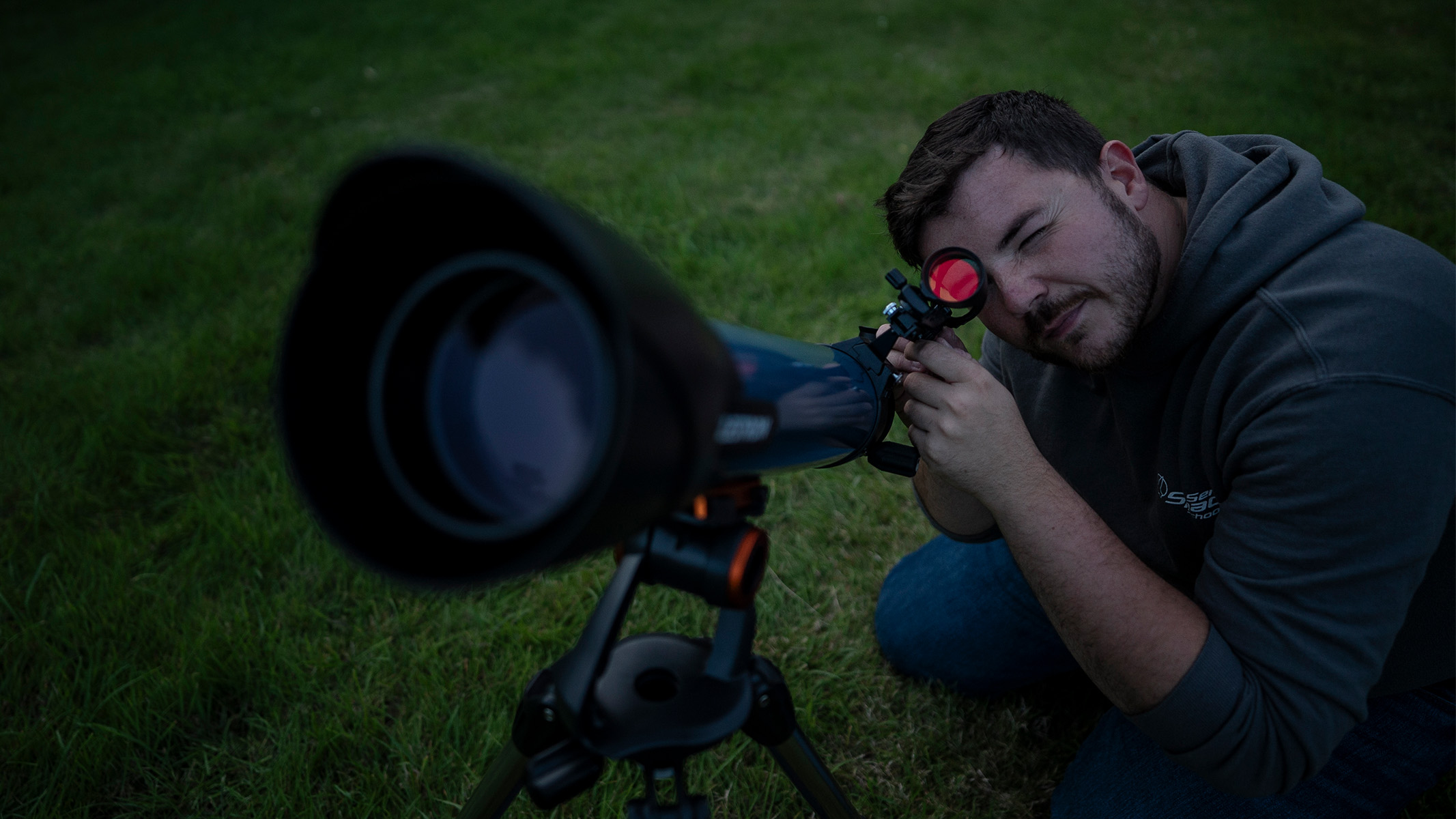
For telescopes we've had our hands on, we've used them extensively in various situations. We've tested how easy they are to set up, how good their optical quality is, and how easy they are to use. When it comes to the best telescopes for kids, we've considered extra challenges, including whether or not children be able to use it unsupervised, and if it's easy enough to operate with smaller hands.
We've considered the price point of every telescope included, what functions it has that might benefit younger users, and the build quality. Is it robust enough to withstand clumsy hands? Is it lightweight enough to be easy to move around?
While we haven't been able to provide in-depth reviews of every telescope on this list, we've used our knowledge of brands and similar models to assess how good a telescope might be for children. We've also paid close attention to consumer reviews to judge the suitability of the telescopes we're recommending.
Get the world’s most fascinating discoveries delivered straight to your inbox.
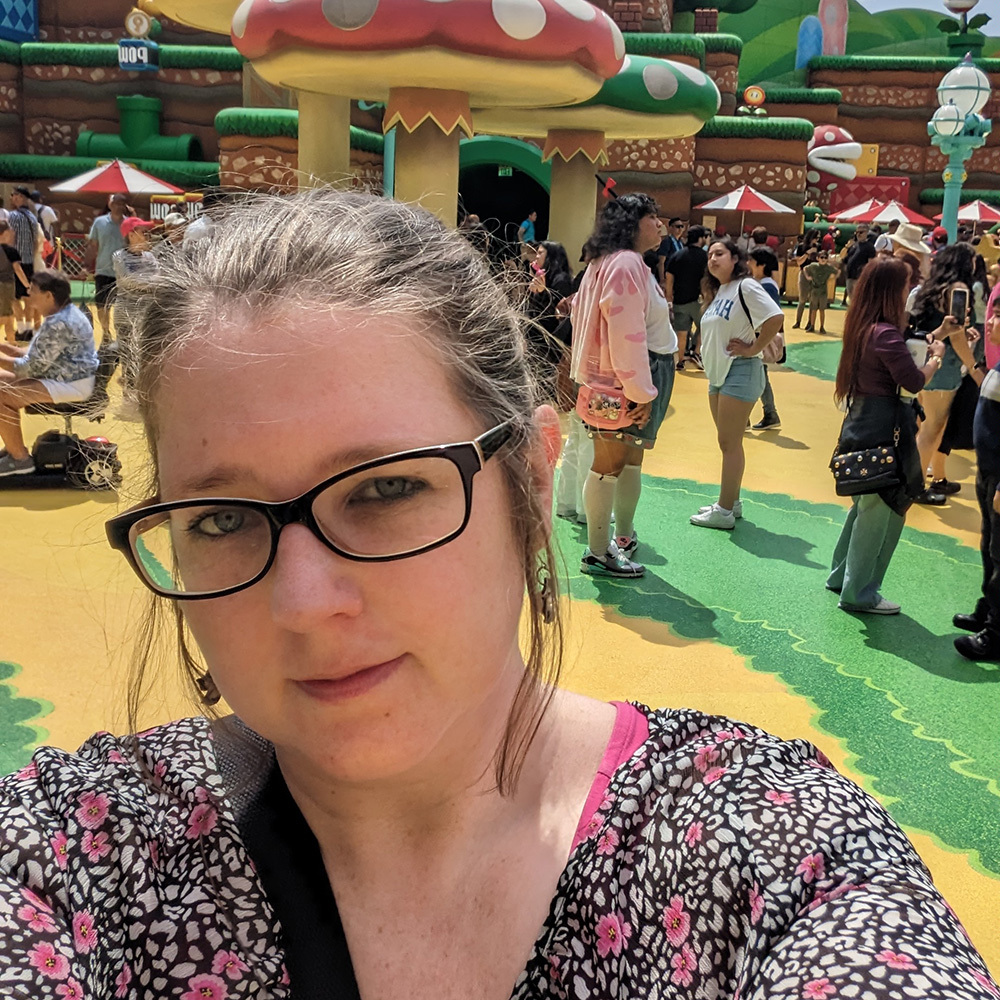
Kim is a UK-based freelancewriter who focuses on Lego, toys and video game-related content. She's the co-creator of GameSpew.com and ThatBrickSite.com, where you'll find most of her work. If she's not building with plastic bricks, playing a video game, or writing about doing either of those things, you should probably check she's still breathing. You can find her on Twitter at @ichangedmyname.
- Kimberley LaneE-commerce writer
